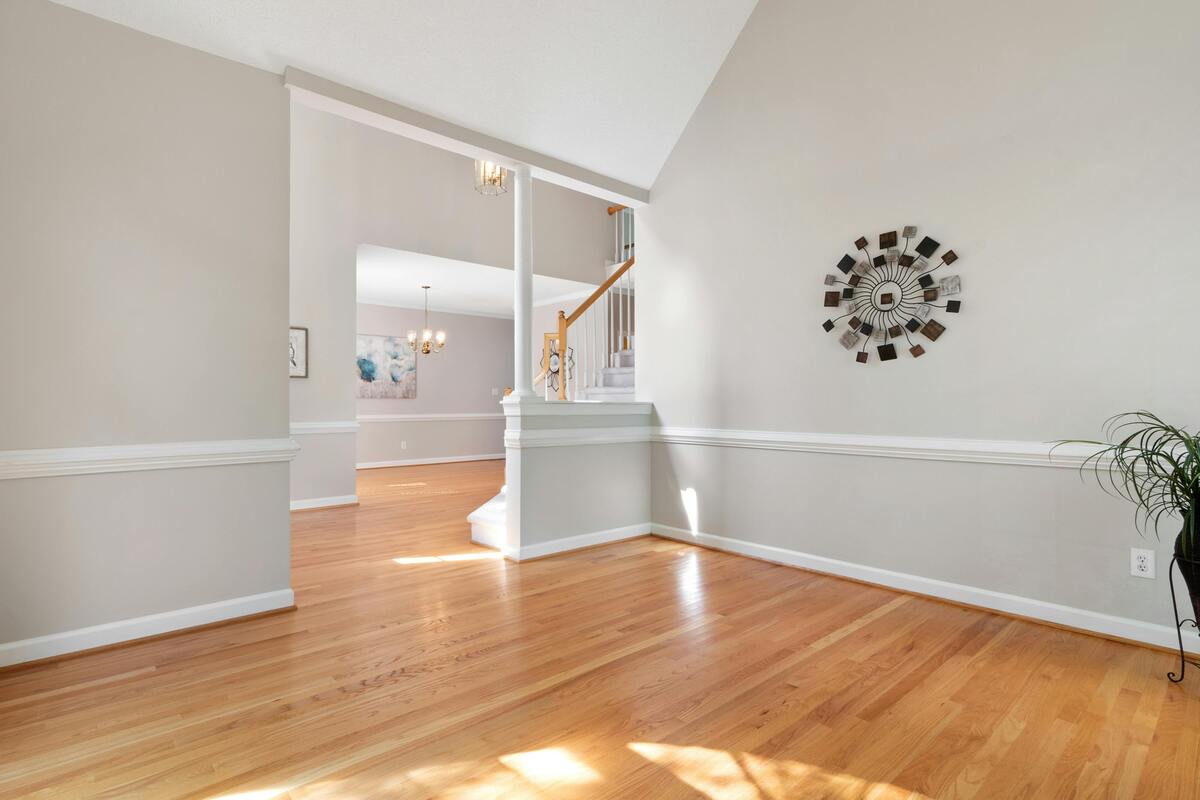Hardwood flooring, celebrated for its timeless beauty and resilience, remains a top choice among homeowners. However, the journey to your perfect floor involves navigating a variety of wood species, each with its own price range. This article explores the intricate connection between wood type and hardwood flooring costs, shedding light on the factors that influence this complex equation.
While wood species play a significant role in determining costs, several other factors contribute to the overall price:
- Hardness and Durability: Floors that withstand the rigours of daily life require strong, durable wood. Harder wood species generally come at a higher price due to their longevity and resistance to wear.
- Availability and Sourcing: Exotic woods from distant regions often have higher costs due to transportation, import duties, and limited supply.
- Aesthetic Appeal: Unique grain patterns, rich colours, and distinctive characteristics can increase a wood’s value, impacting the final price.
- Sustainability: Eco-conscious buyers often choose sustainably sourced woods, which might come with a higher price but offer environmental benefits.
— Oak (Red and White):
Oak is a classic choice known for its durability and versatility. Red oak, with its warm reddish tones and prominent grain patterns, is typically less expensive than white oak, which has a lighter, more neutral colour and finer grain. The cost difference can depend on regional availability and market demand.
— Maple:
Maple flooring is valued for its hardness, light colour, and clean look. Hard maple, especially sugar maple, is popular for its exceptional durability. Soft maple, while less dense, offers a more affordable option with a similar appearance. Both types can vary in colour, from creamy white to reddish hues, affecting pricing.
— Cherry:
Cherry wood is sought after for its rich, warm colour that deepens over time. Its colour variation, ranging from light pink to deep reddish-brown, influences its overall look and cost. Cherry is relatively soft, making it prone to dents and scratches, which may require more care.
— Walnut:
Walnut flooring is known for its luxurious dark colour and striking grain patterns. Types like American black walnut and European walnut have unique characteristics and price points. Walnut is generally more expensive than oak or maple due to its limited supply and high demand.
— Hickory:
Hickory is exceptionally hard and durable, making it ideal for high-traffic areas. It features a distinctive grain pattern with colour variations from light brown to reddish hues. Hickory can be more affordable than other hardwoods, considering its durability.
— Exotic Hardwoods:
Exotic hardwoods from tropical regions offer unique colours and grain patterns. Popular choices include Brazilian cherry, tigerwood, and Ipe. These woods are typically more expensive due to importation costs, limited availability, and harvesting challenges. Their hardness and durability can vary widely, affecting both price and performance.
Table: Hardwood Flooring Cost Comparison
| Wood Type | Average Cost per Square Foot (USD) | Key Characteristics |
|---|---|---|
| Oak (Red and White) | $3-$8 (red); $5-$11 (white) | Classic appearance, durability, wide range of colours and grain patterns. |
| Maple | $6-$14 | Hard, light colour, tight grain, suitable for high-traffic areas. |
| Cherry | $7-$15 | Rich, warm colour that deepens over time, distinctive grain patterns. |
| Walnut | $10-$20 | Dark, luxurious colour, straight grain, sophisticated appearance. |
| Hickory | $6-$13 | Extremely hard, durable, distinctive grain patterns, ideal for high-traffic areas. |
Note: These are average price ranges. Actual costs may vary based on location, installation, finish, and specific wood characteristics.
Durability and the Janka Hardness Scale
The durability of hardwood flooring is often measured by the Janka Hardness Scale, which quantifies wood’s resistance to denting and wear. Higher Janka ratings generally correlate with higher costs due to increased durability.
Common Janka Hardness Ratings:
Woods with higher Janka ratings tend to be more expensive but may offer better long-term value due to their resistance to wear and damage.
- Red Oak: 1,290 lbf (pounds-force)
- White Oak: 1,360 lbf
- Hard Maple: 1,450 lbf
- Hickory: 1,820 lbf
- Brazilian Cherry: 2,350 lbf
Sustainability and Environmental Considerations
The sourcing and sustainability of hardwood significantly impact its cost. Woods certified by organizations like the Forest Stewardship Council (FSC) often command higher prices due to sustainable harvesting practices.
Domestic hardwoods are generally less expensive than exotic species due to lower transportation costs and more abundant supply. However, some domestic species like American Chestnut are rare due to historical overharvesting or disease, leading to higher prices.
Reclaimed wood, sourced from old buildings or structures, offers a sustainable option that can be more expensive due to the labour-intensive process of salvaging and preparing the wood for reuse.
Installation and Finishing Costs
While wood type significantly affects the overall cost of hardwood flooring, installation and finishing costs also vary based on the wood species:
- Hardness: Harder woods may require more labour and specialized tools for installation, increasing labour costs.
- Stability: Some woods, like maple, are more prone to expansion and contraction with humidity changes, requiring more precise installation techniques.
- Finishing: Softer woods may need more coats of finish or more frequent refinishing, impacting long-term maintenance costs.
Final Thoughts
Choosing a wood type for hardwood flooring involves balancing cost, durability, aesthetics, and environmental considerations. While oak remains a popular and cost-effective choice, homeowners seeking unique looks or extreme durability might opt for more expensive options like walnut or exotic hardwoods. When budgeting for hardwood flooring, consider not just the initial cost per square foot but also long-term factors such as durability, maintenance, and potential refinishing needs. A pricier wood that lasts longer or requires less maintenance can prove more cost-effective over time.
Ultimately, the best hardwood flooring choice depends on individual needs, preferences, and budget constraints. Consulting with flooring professionals and obtaining samples can help homeowners make informed decisions that balance cost with desired appearance and performance.

